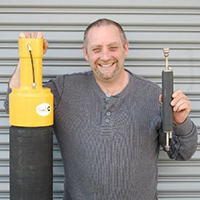Innovation is a defining word that is shaping the future of the mining industry. Unprecedented advancements in technology are touching many facets of the industry, from personnel management to environmental footprint.
As the mining industry continues to leverage innovative technology to improve working conditions, stay on the cutting edge and remain competitive, expect to see coordinated efforts address the growing demands for further mineral resources.
As an ancient industry, mining dates back to the foundation of civilization. Despite antiquity, mining continues to be central to the global economic landscape. As mining is central to the global economic landscape, its presence has the potential to, directly and indirectly, shape and affect economies.
Economic opportunities and growth are present in:
Its ability to sustain such a prolonged history is brought on by leveraging innovation and technology. Recent advancements in technology are transforming mining, creating an industry proactively ready for the challenges ahead.
Although not exhaustive, we examine below three facets of mining that are directly impacted by innovative technology, changing each process to become more efficient and sustainable for years to come.
Technology is a key facet of mineral exploration. The capabilities of modern mineral exploration can be attributed to new technologies found in geological, geophysical and geochemical industries.
Previously, tomographic imaging, GPS and drilling technology drove mining efficiency and productivity.
Today, innovative equipment is driving success. Mineral deposit discoveries in modern mineral exploration are done by cutting-edge technology and the application of new concepts.
When discovering a mineral deposit, studies are carried out with the application of geophysics, providing accurate, reliable analysis of minerals and rocks.
Packer testing, computer modeling, geostatistical software, and spectrometric analysis establish geophysical data to determine the properties of underground minerals and rocks.
The ability to model mineral deposits at the early stages provides cost-saving and efficiency measures, allowing firms to directly drill narrower and deeper shafts that minimize environmental impact. When combined with robotics and automation technology, this method of mining circumvents the traditional risks and undesirable conditions posed to personnel.
As a labor-intensive industry, mining is often associated with certain occupational hazards. Occupational health hazards are physical, chemical, biological, ergonomic and psychosocial. As an important industrial sector, safety remains a top priority.
Innovative technology is progressing in terms of how these associated risks are addressed, effectively reducing health and safety risks.
The application of 3D imaging and laser scanning technology captures spatial and surface mapping data, allowing geologists to build three-dimensional images of geographical environments and topography. The use of such technology enables geologists to survey mining environments that can pose a risk to workers or are inaccessible by personnel.
When accompanied by mechanical packers, tools that can control erosion and stabilize soil conditions and surrounding rock, mining schedules are kept on track and cost-effective while reducing unnecessary risk to workers.
Other technological solutions that are improving mining personnel safety and working conditions include:
The recent Paris Climate Agreement and other environmental accords are urging the mining community to rethink their environmental legacy. As such, substantial progress has been made in recent years across many aspects of the industry.
Recent technology has created a multifaceted approach, from operations to rehabilitation, to creating a more efficient and environmentally responsible industry.
While mining presents particular challenges, the presence of innovation empowers the industry to strive for a more efficient, safe, sustainable and socially integrated future. These groundbreaking contributions indicate the continuous improvement that the industry is currently undergoing. Technology present in mining is particularly transferrable and can be broadly applied in many areas of science and the industrial sector.
Despite being a well-established industry, innovation and new concepts of growth still flourish.
 Author Bio
Author Bio
Dave Baca is the General Manager at Aardvark Packers LLC, overseeing day-to-day operations as well as sales, marketing, purchasing and work order manipulation. He received his machinist degree in 1989 and excels at design on AutoCAD, transforming designs into the packer systems requested by clients.
Scott Ellyson, CEO of East West Manufacturing, brings decades of global manufacturing and supply chain leadership to the conversation. In this episode, he shares practical insights on scaling operations, navigating complexity, and building resilient manufacturing networks in an increasingly connected world.